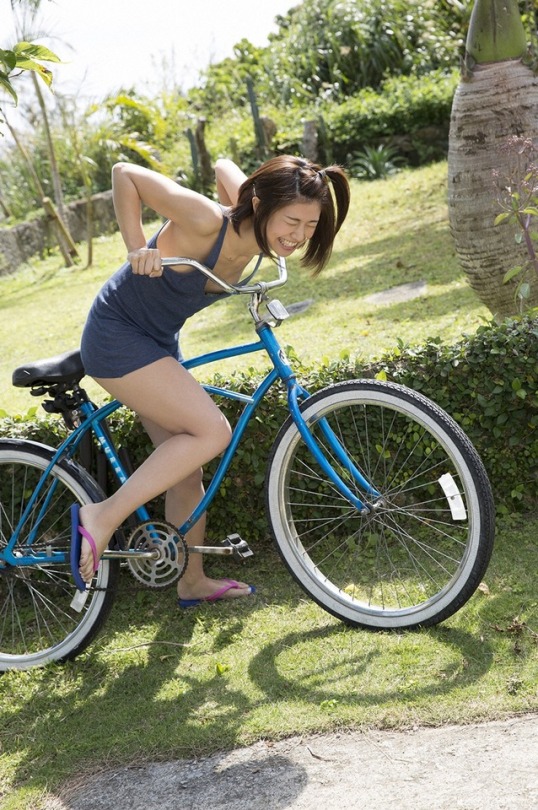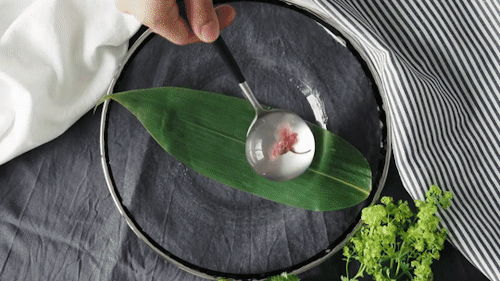Boo-tiful Ring Galaxies
Boo-tiful Ring Galaxies

A ghoulish secret lurks within each of these gorgeous galaxies. Their rings are dotted with stellar graveyards!

These objects are called ring galaxies, and scientists think most of them form in monster-sized crashes. Not just any galaxy collision will do the trick, though. To produce the treat of a ring, a smaller galaxy needs to ram through the center of a larger galaxy at just the perfect angle.

The collision causes ripples that disturb both galaxies. The gravitational shock causes dust, gas, and stars in the larger galaxy’s disk to rush outward. As this ring of material plows out from the galaxy’s center, gas clouds collide and trigger the birth of new stars.

In visible light, the blue areas in the galaxies’ rings show us where young, hot stars are growing up. Faint, pink regions around the ring mark stellar nurseries where even younger stars set hydrogen gas aglow.
The newborn stars come in a mix of sizes, from smaller ones like our Sun all the way up to huge stars with tens of times the Sun’s mass. And those massive stars live large!
While a star like our Sun will last many billions of years before running out of fuel, larger stars burn much brighter and faster. After just a few million years, the largest stars explode as supernovae. When massive stars die, they leave behind a stellar corpse, either a neutron star or black hole.

When we turn our X-ray telescopes to these ring galaxies, we see telltale signs of stellar remnants dotted throughout their ghostly circles. The purple dots in the X-ray image above are neutron stars or black holes that are siphoning off gas from a companion star, like a vampire. The gas reinvigorates stellar corpses, which heat up and emit X-rays. These gas-thirsty remains are beacons lighting the way to stellar graveyards.
Spiral galaxies — like our home galaxy, the Milky Way — have curved arms that appear to sweep out around a bright center. The dust and gas in those spiral arms press together, causing cycles of star formation that result in a more even mix of new stars and stellar corpses scattered throughout our galaxy. No creepy ring of stellar corpses here!
To visit some other eerie places in the universe, check out the latest additions to the Galaxy of Horrors poster series and follow NASA Universe on Twitter and Facebook for news about black holes, neutron stars, galaxies, and all the amazing objects outside our solar system.
Make sure to follow us on Tumblr for your regular dose of space: http://nasa.tumblr.com
More Posts from Thehkr and Others





藤木由貴
“There are some people who could hear you speak a thousand words, and still not understand you. And there are others who will understand. without you even speaking a word.”
— Yasmin Mogahed

イエス・キリストbotさんのツイート: “←語彙力がある人 語彙力がない人→… ”
The Path to High Adventure Begins With Scouting!

Former NASA astronaut and Girl Scout alumna Jan Davis eating Girl Scout Cookies inside the shuttle Endeavour on Sept. 12, 1992. Image credit: NASA
Leadership, service, being prepared and doing your best – these qualities are exemplified by our astronauts, but are also shared by the Girl Scouts! Our astronaut corps has many scout alumnae, and over the years they’ve been breaking barriers and making names for themselves at NASA.
Today marks the 108th birthday of Girl Scouts in the United States, which has been inspiring generations of girls through leadership and STEM (science, technology, engineering and mathematics) activities to empower the explorers of today and tomorrow. To celebrate, we’re highlighting some of our Girl Scout alumnae over the years!

NASA astronaut and Girl Scout alumna Sunita Williams, who served as an International Space Station commander and spent 322 days in space during two spaceflight expeditions.
Former Scouts have served as crew members on numerous spaceflight missions.

From left: Susan Helms, the first female International Space Station crew member; Eileen Collins, the first woman to pilot and command a space shuttle; and Dr. Kathy Sullivan, the first American woman to perform a spacewalk.
Former Girl Scouts flew on more than one-third of the space shuttle missions and were pioneering forces as women began making their mark on human spaceflight. The first female crew member to serve on the International Space Station, the first to pilot and command a space shuttle and the first American woman to spacewalk were all Scout alumnae.
They continue to break records, such as the first three all-woman spacewalks…

Girl Scout alumnae and NASA astronauts Christina Koch and Jessica Meir made history when they conducted the first ever all-woman spacewalk on Oct.18, 2019. They went on to complete two more spacewalks, successfully completing their task of upgrading the space station’s battery charge/discharge unit. Christina and Jessica’s historic spacewalk was a testament to the growing number of women (and Girl Scouts) joining our astronaut corps; it is a milestone worth celebrating as we look forward to putting the first woman on the Moon with our Artemis Program!
….and the longest spaceflight ever by a woman!

NASA astronaut Christina Koch smiles for a selfie while completing tasks during a spacewalk outside the International Space Station.
Koch went on to seal her name in the record books by surpassing Peggy Whitson’s record for the longest single spaceflight in history by a woman!
Understanding how the human body adjusts to things like weightlessness, radiation and bone-density loss is crucial as we look forward to embarking on long-duration spaceflights to the Moon and Mars. Thanks to former astronaut Scott Kelly’s Year in Space mission, we’ve been able to observe these changes on a biological male. Now, thanks to Christina’s mission, we are able to observe these changes on a biological female.
Girl Scout alumnae will also help lead human exploration farther than ever before as members of our Artemis generation!

From left: NASA astronauts Kayla Barron, Jessica Watkins and Loral O’Hara
On January 10, 2020 we welcomed 11 new astronauts to our ranks – including three Girl Scout alumnae! As part of the first-ever class of astronauts under our Artemis lunar exploration program, Kayla Barron, Jessica Watkins and Loral O’Hara are now qualified for assignments including long-duration missions to the International Space Station, the Moon and Mars.
They took a moment after graduation to share inspiration and insight for current and future Scouts!
Q: A question from the Girl Scouts: What inspires you?
A: “Being a part of an awesome team has always been what inspires me. Whether it’s your Girl Scout troop, a sports team, your class – I think for me always the people around me who push me to succeed and support me when I make mistakes and help me become my best self is what inspires me to show up and do my best.” - NASA astronaut Kayla Barron
Q: How has being a Girl Scout helped you in becoming an astronaut?
A: “Being in the Girl Scouts when I was younger was really cool because, well, first it was just a group of my friends who got to do a lot of different things together. But it really gave us the opportunity to be exposed to a lot of different areas. Like we’d get to go camping. We’d get to ride horses and learn all of these different skills, and so that variety of skill set I think is very applicable to being an astronaut.” - NASA astronaut Loral O’Hara
Q: What would your advice be for the next generation of Girl Scout astronauts?
A: “My advice would be to find something that you’re passionate about. Ideally something in the STEM fields: Science, Technology, Engineering or Mathematics, and to pursue that thing that you’re interested in. Pursue that passion, whatever it is. And don’t give up on your dreams, and continue to follow them until you arrive where you want to be.” - NASA astronaut Jessica Watkins
To all the Girl Scouts out there, keep reaching for the stars because the sky is no longer the limit!
Astronaut applications are OPEN until March 31 for the next class of Artemis generation astronauts who will embark on missions to the International Space Station, the Moon and Mars. If you’re interested in applying to #BeAnAstronaut or just want to learn more, click HERE.
Make sure to follow us on Tumblr for your regular dose of space: http://nasa.tumblr.com


Throwback Thursday: Apollo 11 Moon Landing Questions Answered

The Apollo 11 Moon landing was a feat for the ages. With the help of the NASA History Office, we’ve identified some of the most frequently asked questions surrounding the first time humans walked on the surface of another world. Click here to check out our post from last week.
Is it true that the Apollo guidance computer had less computing power than a smartphone?

Believe it or not, yes! The Apollo guidance computer not only had less computing power than a smartphone, it had less computing power than the calculator you use in your algebra class. The computer, designed by MIT, had a fixed memory of 36 kilobytes and an erasable memory of 2 kilobytes. That’s fairly advanced for the time!
Why did Buzz Aldrin take a picture of his bootprint?

A substantial portion of the Apollo 11 crew’s checklist was taking photographs. Taking closeup shots of the "very fine” moon dust was a critical component of mission objectives and helped scientists better understand the surface makeup of the Moon.

Armstrong and Aldrin wore lunar overboots over their main spacesuit boots to protect them from ultraviolet radiation and hazardous rocks. To make room for the nearly 50 pounds (22 kilograms) of lunar samples, the crew left all their pairs of boots on the Moon. But don’t worry; they wouldn’t get charged an overweight baggage fee anyway.

What were the first words spoken from the surface of the Moon?

That’s somewhat subject to interpretation. Once the Lunar Module’s footpads touched the surface, Buzz Aldrin called out “Contact Light” to Mission Control. After the engine shut down, he said “ACA out of detent,” simply meaning that the Eagle’s Attitude Control Assembly, or control stick, was moved from its center position.
But the first words heard by the entire world after Apollo 11 touched down were delivered by Neil Armstrong: "Houston, Tranquility Base here. The Eagle has landed.” More than six hours later, Armstrong stepped off the Eagle’s footpad and delivered the most famous words ever spoken from the surface of another world: "That’s one small step for [a] man, one giant leap for mankind." And although we have a hard time hearing it in the recording, Armstrong clarified in a post-flight interview that he actually said, “That’s one small step for a man…”
What will the first woman and the next man to go to the Moon say when they first step on its surface?

We can’t say for sure what our next moonwalkers will decide to say, but perhaps the better question is: What would be your first words if you were to land on the Moon? There’s no doubt that the astronauts of the Artemis Generation will inspire a new crop of explorers the way Apollo Generation astronauts did 50 years ago. Make sure to follow us on Tumblr for your regular dose of space: http://nasa.tumblr.com.



Raindrop Cake 水信玄餅

BMW M3 Interior | via
“The best preparation for tomorrow is doing your best today.”
— H. Jackson Brown
Setting the Standards for Unmanned Aircraft
From advanced wing designs, through the hypersonic frontier, and onward into the era of composite structures, electronic flight controls, and energy efficient flight, our engineers and researchers have led the way in virtually every aeronautic development. And since 2011, aeronautical innovators from around the country have been working on our Unmanned Aircraft Systems integration in the National Airspace System, or UAS in the NAS, project.

This project was a new type of undertaking that worked to identify, develop, and test the technologies and procedures that will make it possible for unmanned aircraft systems to have routine access to airspace occupied by human piloted aircraft. Since the start, the goal of this unified team was to provide vital research findings through simulations and flight tests to support the development and validation of detect and avoid and command and control technologies necessary for integrating UAS into the NAS.

That interest moved into full-scale testing and evaluation to determine how to best integrate unmanned vehicles into the national airspace and how to come up with standards moving forward. Normally, 44,000 flights safely take off and land here in the U.S., totaling more than 16 million flights per year. With the inclusion of millions of new types of unmanned aircraft, this integration needs to be seamless in order to keep the flying public safe.

Working hand-in-hand, teams collaborated to better understand how these UAS’s would travel in the national airspace by using NASA-developed software in combination with flight tests. Much of this work is centered squarely on technology called detect and avoid. One of the primary safety concerns with these new systems is the inability of remote operators to see and avoid other aircraft. Because unmanned aircraft literally do not have a pilot on board, we have developed concepts allowing safe operation within the national airspace.

In order to better understand how all the systems work together, our team flew a series of tests to gather data to inform the development of minimum operational performance standards for detect and avoid alerting guidance. Over the course of this testing, we gathered an enormous amount of data allowing safe integration for unmanned aircraft into the national airspace. As unmanned aircraft are becoming more ubiquitous in our world - safety, reliability, and proven research must coexist.

Every day new use case scenarios and research opportunities arise based around the hard work accomplished by this incredible workforce. Only time will tell how these new technologies and innovations will shape our world.

Want to learn the many ways that NASA is with you when you fly? Visit nasa.gov/aeronautics.
Make sure to follow us on Tumblr for your regular dose of space: http://nasa.tumblr.com.
-
 maxxxmuscle liked this · 1 year ago
maxxxmuscle liked this · 1 year ago -
 jesusmariasblog liked this · 1 year ago
jesusmariasblog liked this · 1 year ago -
 millerman1969 liked this · 1 year ago
millerman1969 liked this · 1 year ago -
 roguedemon7 reblogged this · 1 year ago
roguedemon7 reblogged this · 1 year ago -
 roguedemon7 liked this · 1 year ago
roguedemon7 liked this · 1 year ago -
 jchapa13 liked this · 1 year ago
jchapa13 liked this · 1 year ago -
 khomsan-10110 liked this · 1 year ago
khomsan-10110 liked this · 1 year ago -
 unabashedmoonhideout6969 liked this · 1 year ago
unabashedmoonhideout6969 liked this · 1 year ago -
 solinvict-haroldhn0907 liked this · 1 year ago
solinvict-haroldhn0907 liked this · 1 year ago -
 lullo26 liked this · 1 year ago
lullo26 liked this · 1 year ago -
 shadowninja86 liked this · 1 year ago
shadowninja86 liked this · 1 year ago -
 gwentrapta liked this · 1 year ago
gwentrapta liked this · 1 year ago -
 armchair-misanthrope liked this · 1 year ago
armchair-misanthrope liked this · 1 year ago -
 jollyladyshark liked this · 2 years ago
jollyladyshark liked this · 2 years ago -
 parisian-stawberry reblogged this · 2 years ago
parisian-stawberry reblogged this · 2 years ago -
 parisian-stawberry liked this · 2 years ago
parisian-stawberry liked this · 2 years ago -
 freesonyplaystation720pfull-hd reblogged this · 2 years ago
freesonyplaystation720pfull-hd reblogged this · 2 years ago -
 freesonyplaystation720pfull-hd liked this · 2 years ago
freesonyplaystation720pfull-hd liked this · 2 years ago -
 kacyandavatrice4ever liked this · 2 years ago
kacyandavatrice4ever liked this · 2 years ago -
 catgirl-wrapped-in-a-dirty-towel reblogged this · 2 years ago
catgirl-wrapped-in-a-dirty-towel reblogged this · 2 years ago -
 catgirl-wrapped-in-a-dirty-towel liked this · 2 years ago
catgirl-wrapped-in-a-dirty-towel liked this · 2 years ago -
 whitestnoise liked this · 2 years ago
whitestnoise liked this · 2 years ago -
 r3v3rs3 liked this · 2 years ago
r3v3rs3 liked this · 2 years ago -
 arialis reblogged this · 2 years ago
arialis reblogged this · 2 years ago -
 lola1695 liked this · 2 years ago
lola1695 liked this · 2 years ago -
 aurocelas liked this · 2 years ago
aurocelas liked this · 2 years ago -
 hemiscyllium liked this · 3 years ago
hemiscyllium liked this · 3 years ago -
 efa71 liked this · 3 years ago
efa71 liked this · 3 years ago -
 swimmingbowl liked this · 3 years ago
swimmingbowl liked this · 3 years ago -
 markusmessiah reblogged this · 3 years ago
markusmessiah reblogged this · 3 years ago -
 rainytea2day liked this · 3 years ago
rainytea2day liked this · 3 years ago -
 wyanton liked this · 3 years ago
wyanton liked this · 3 years ago